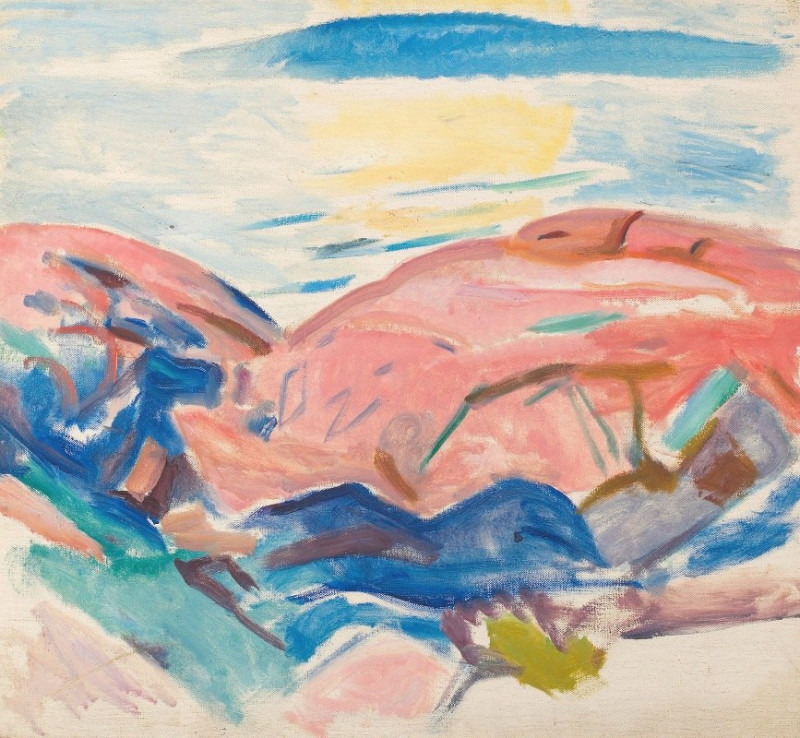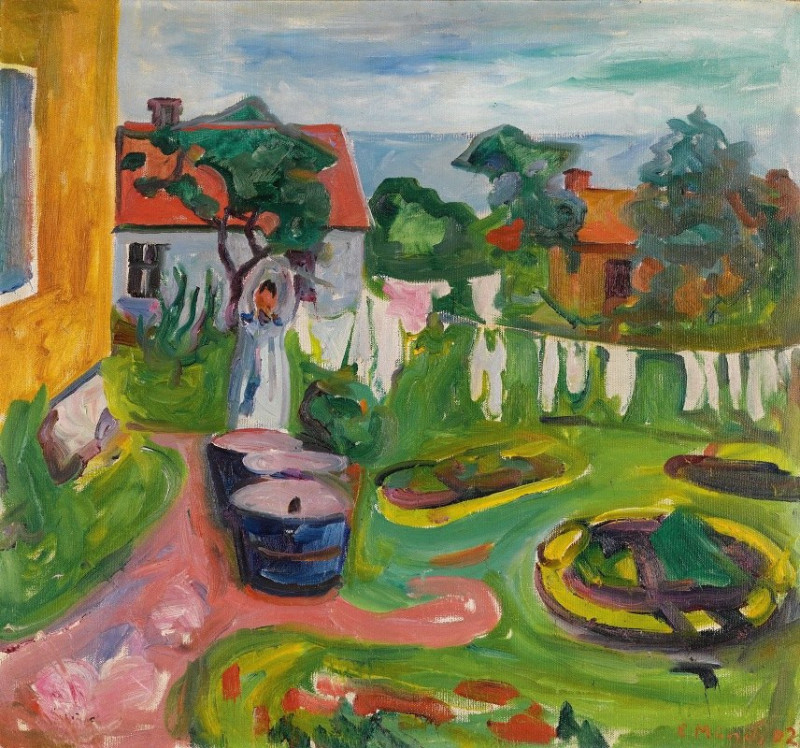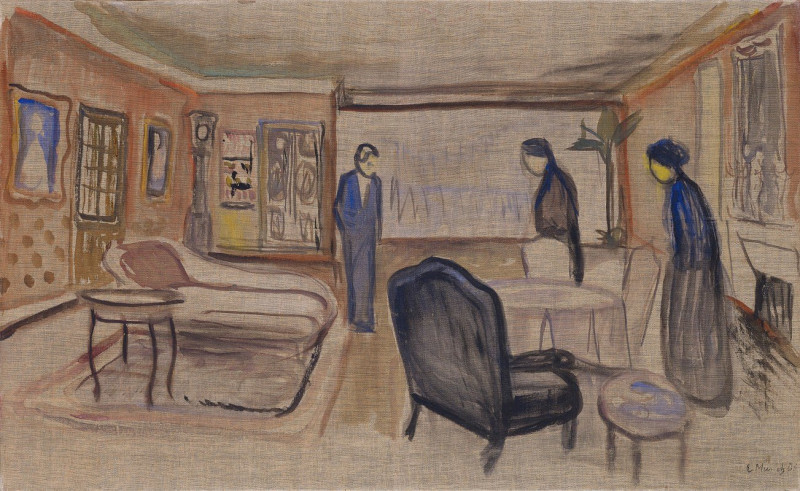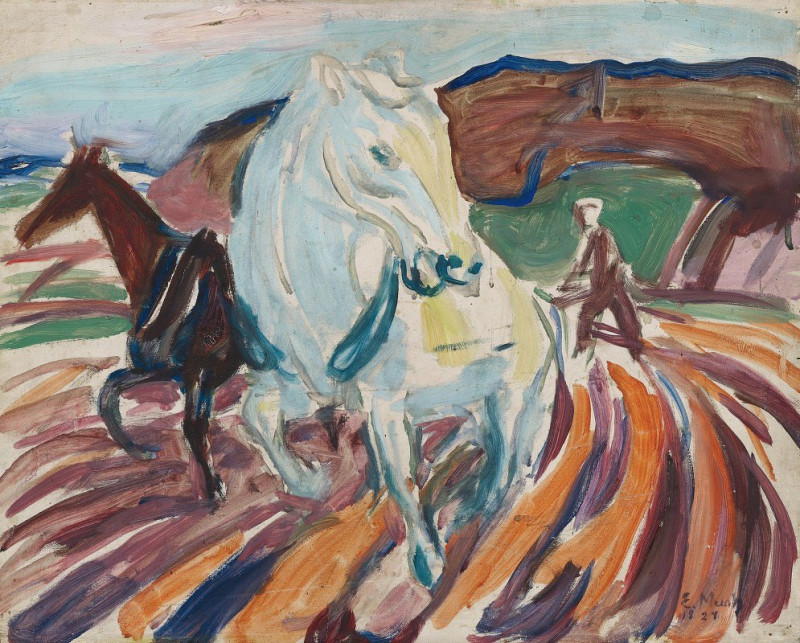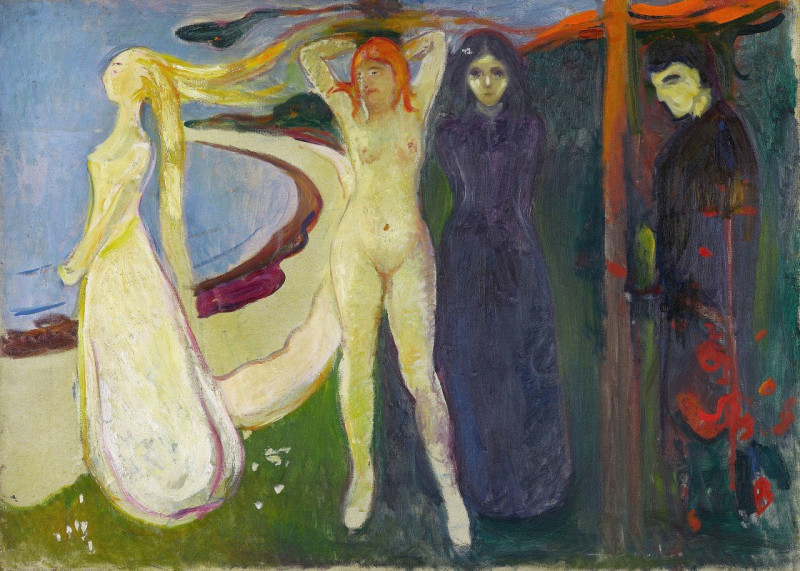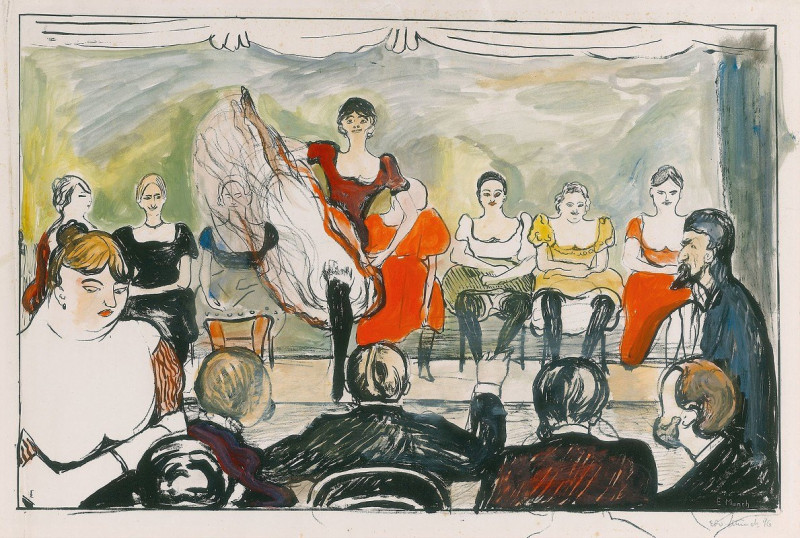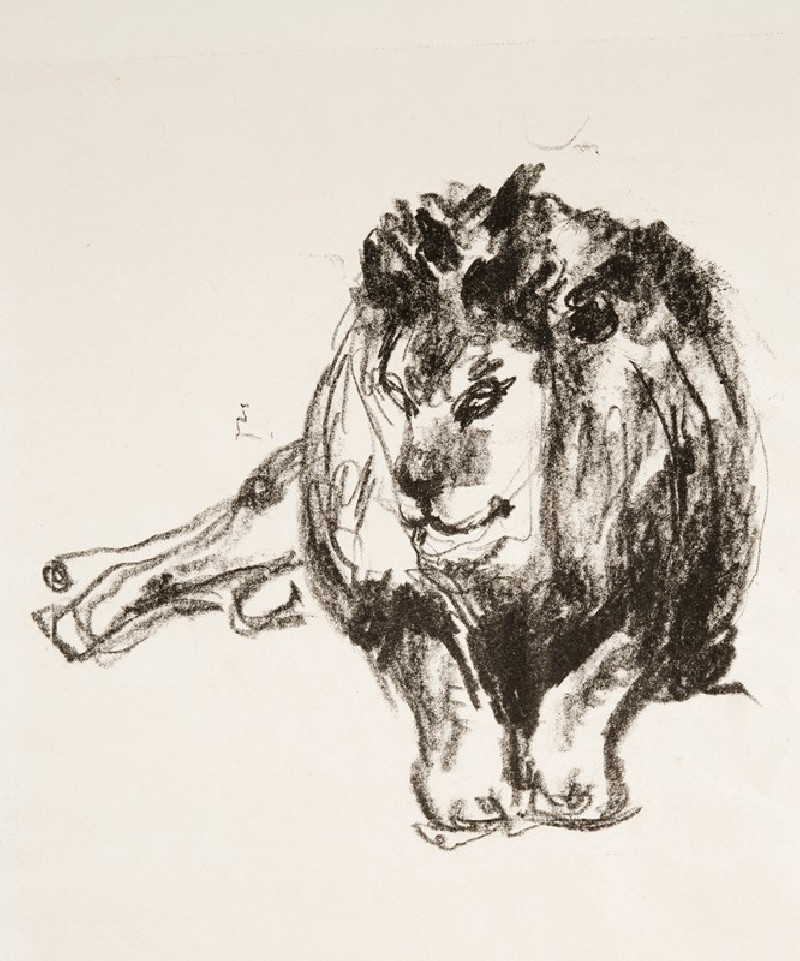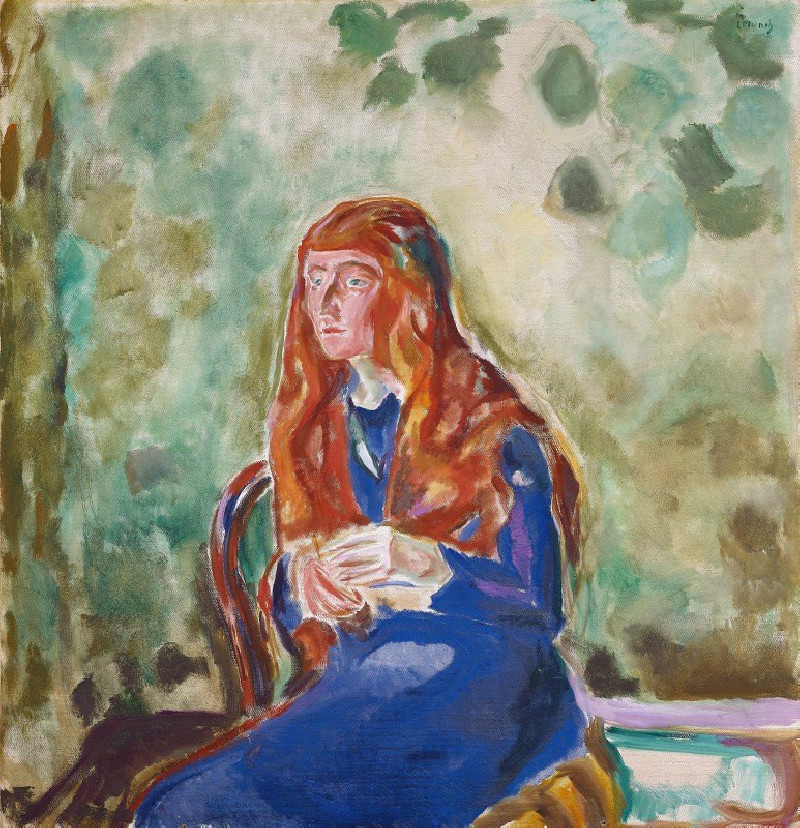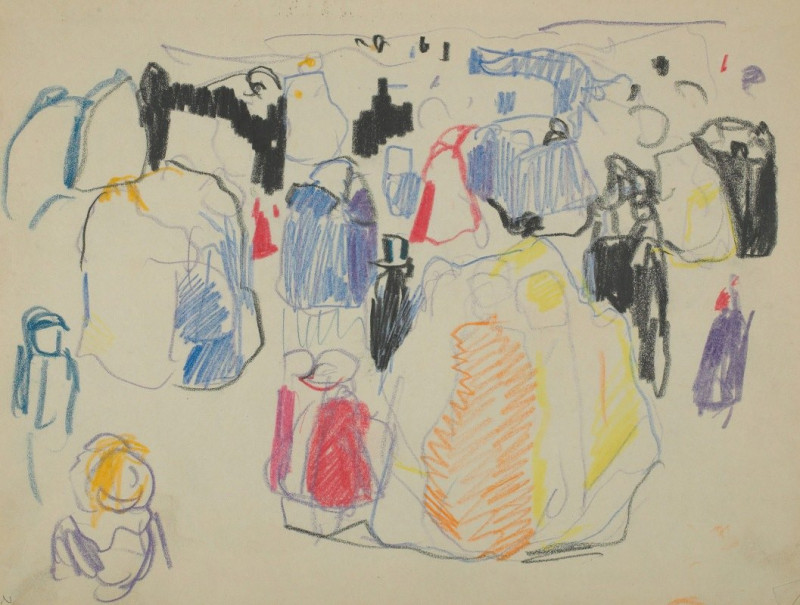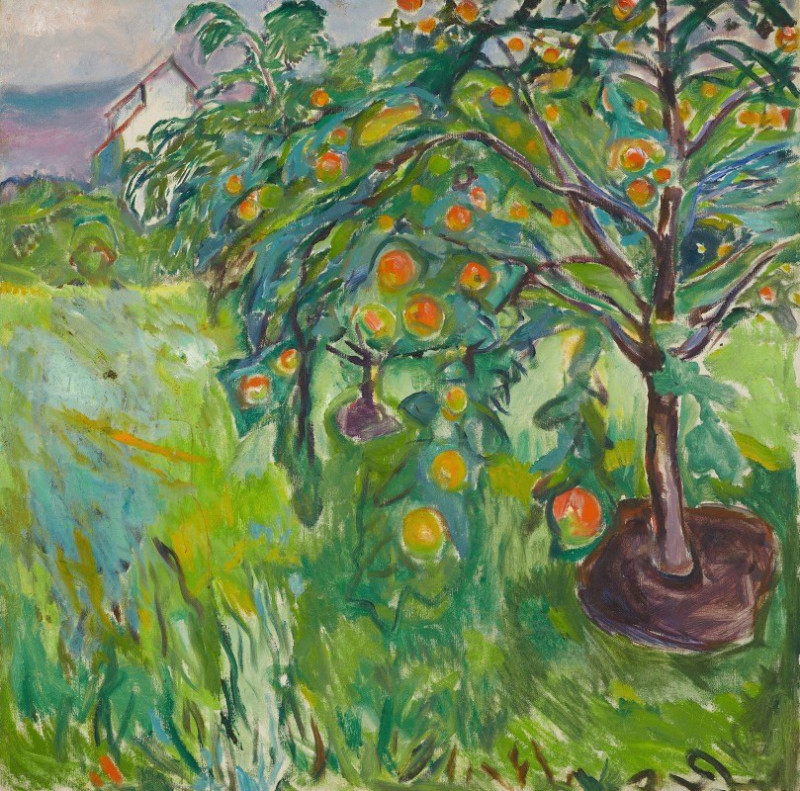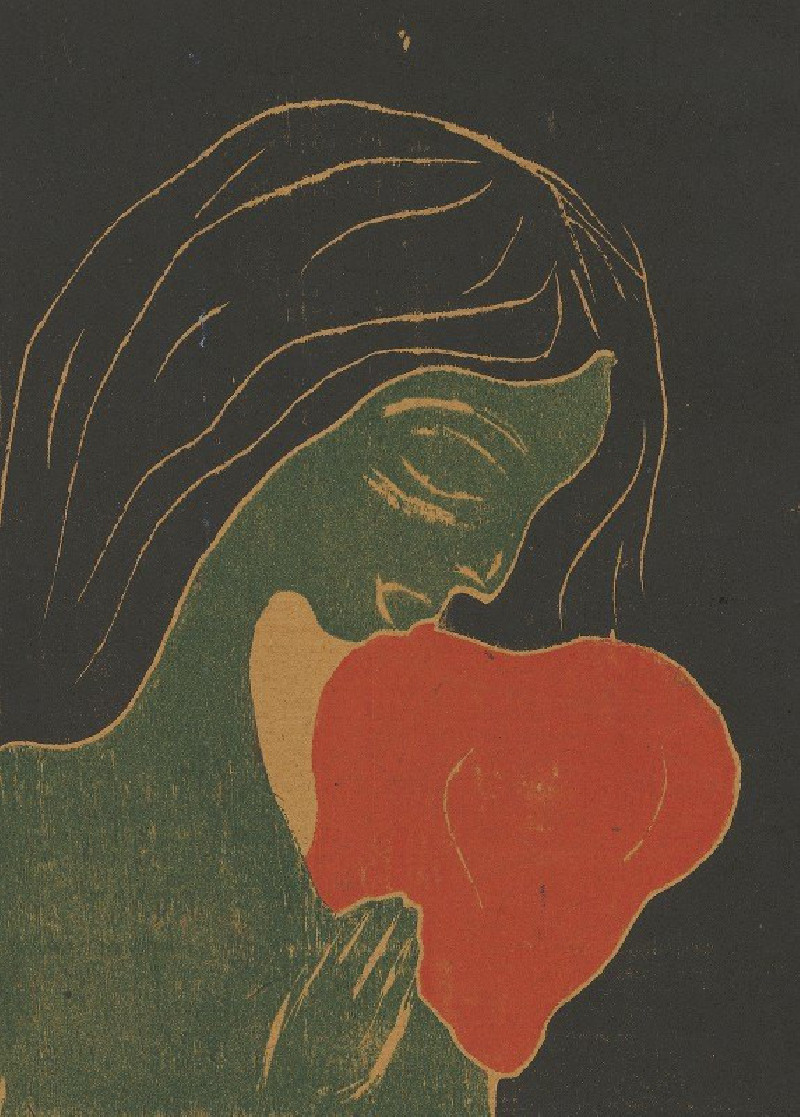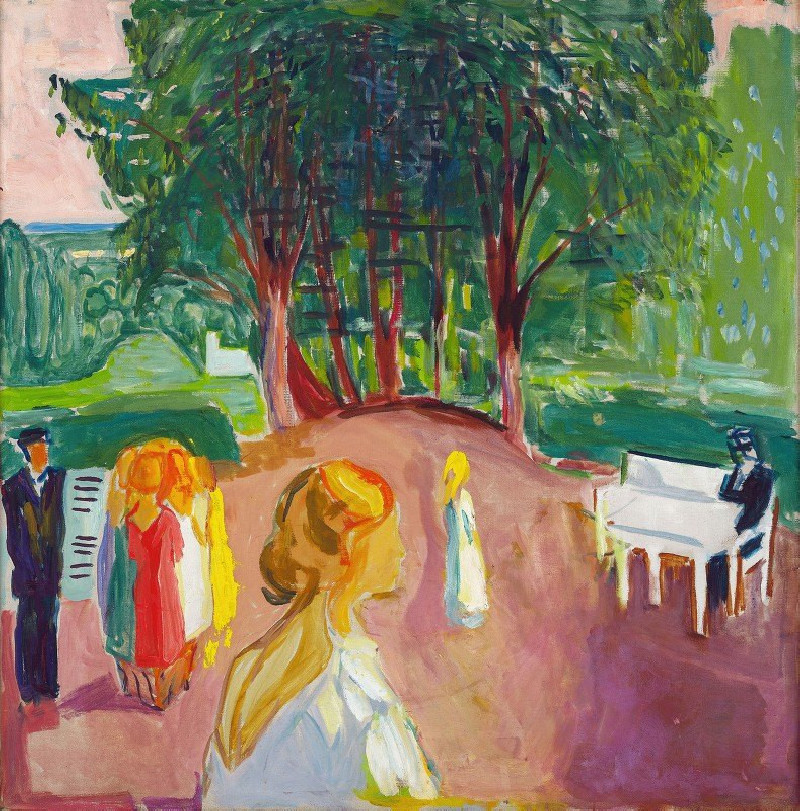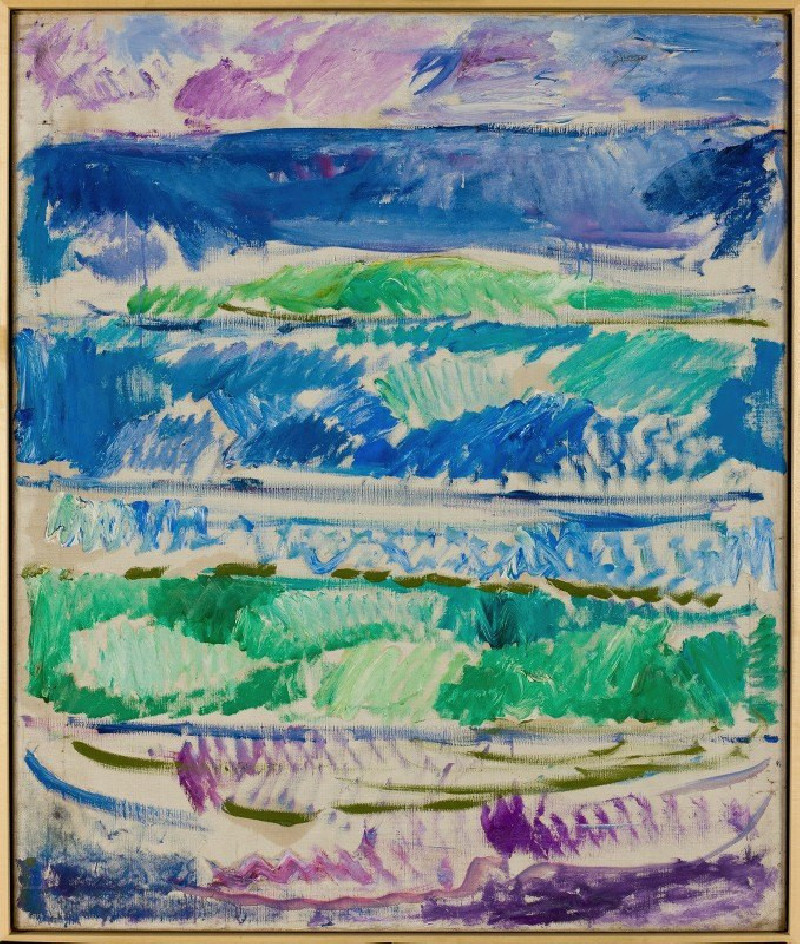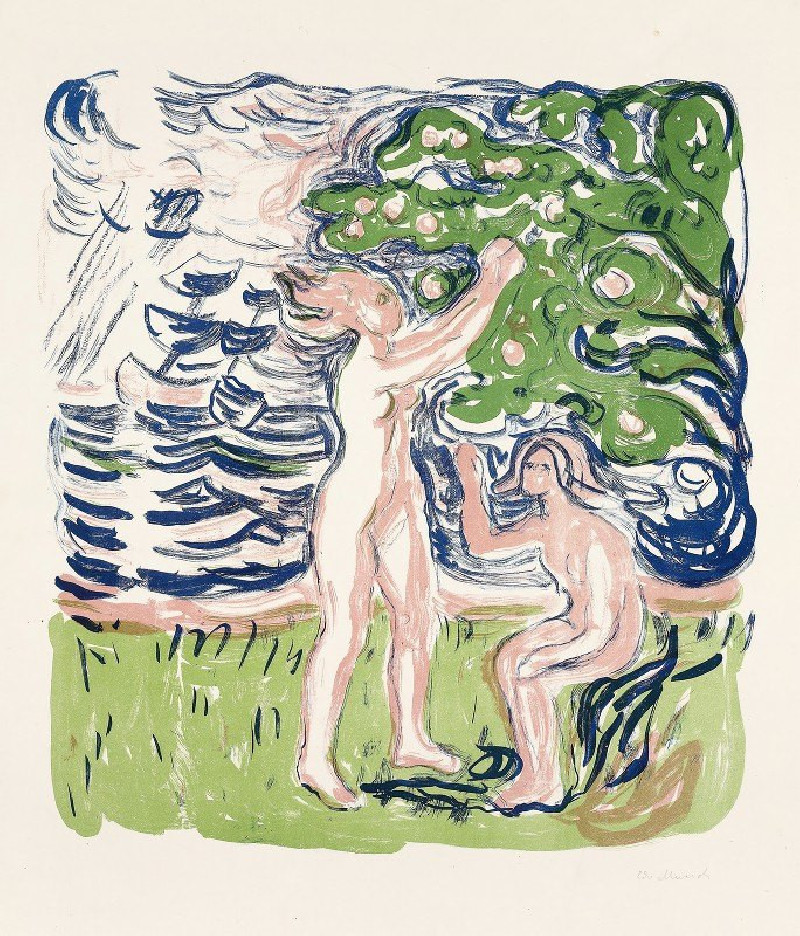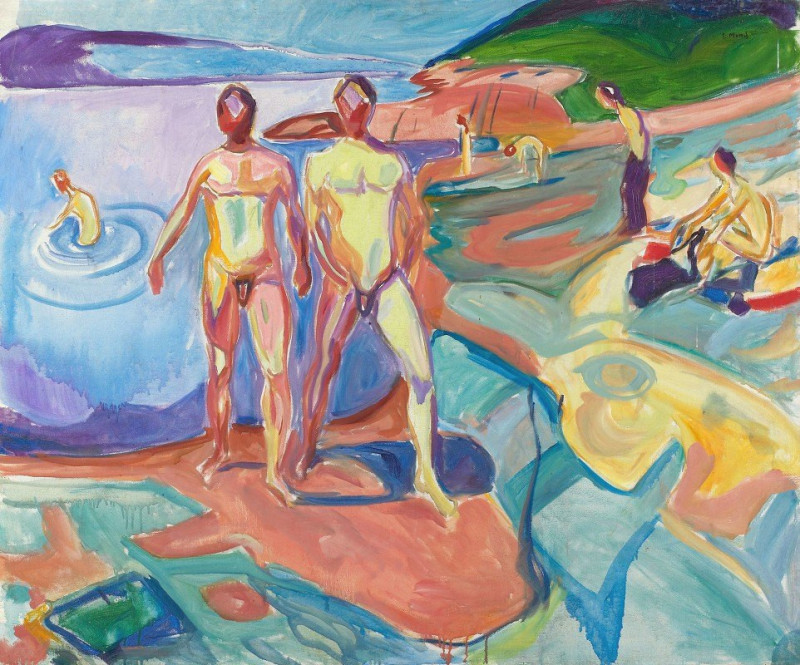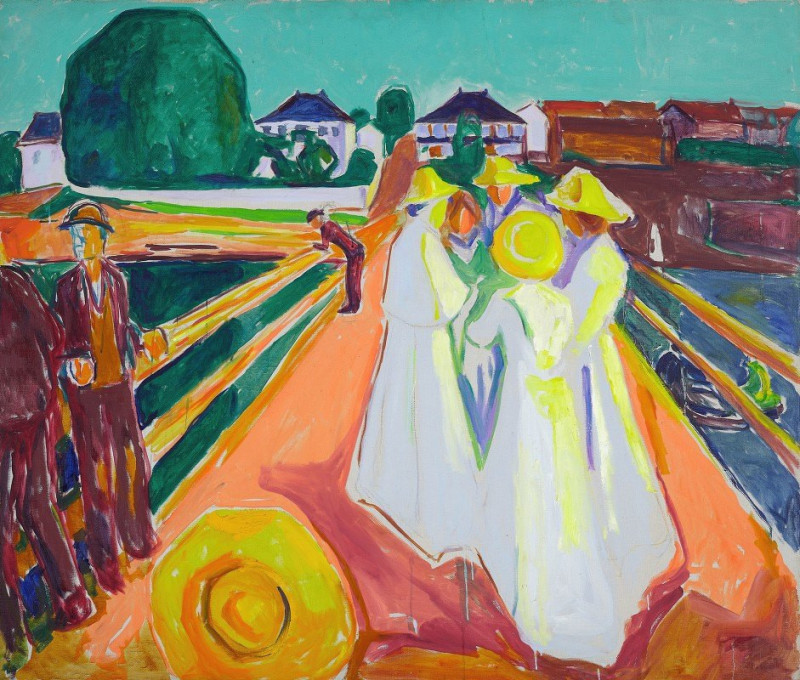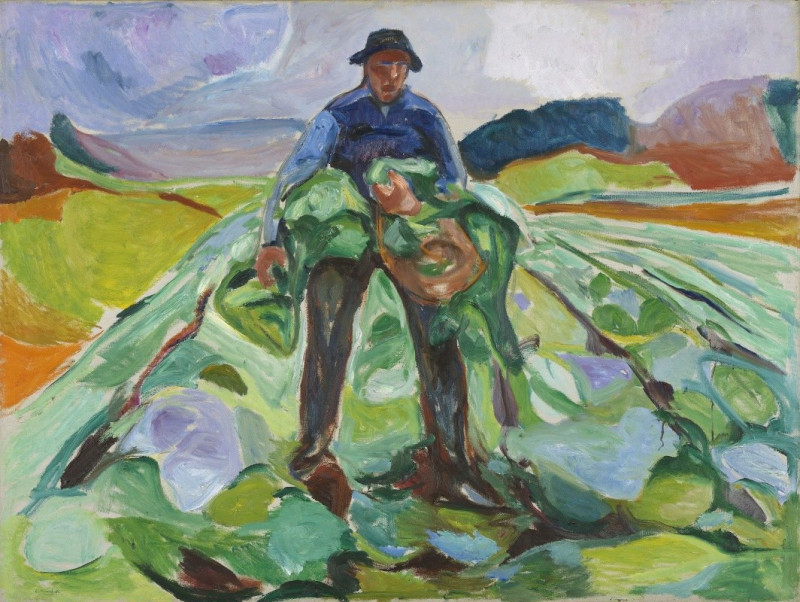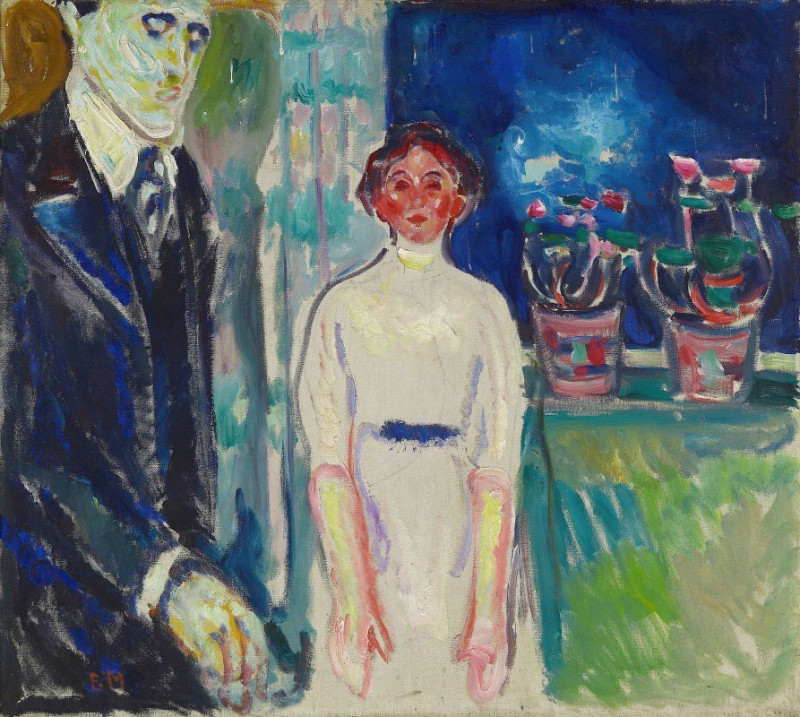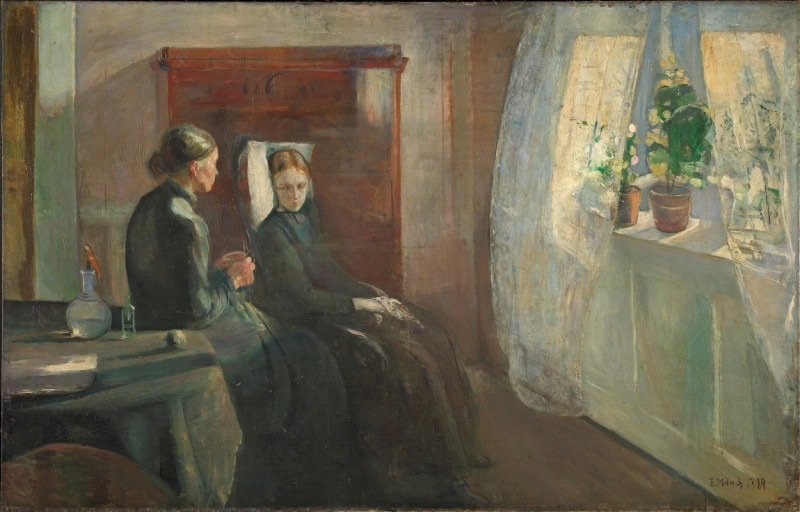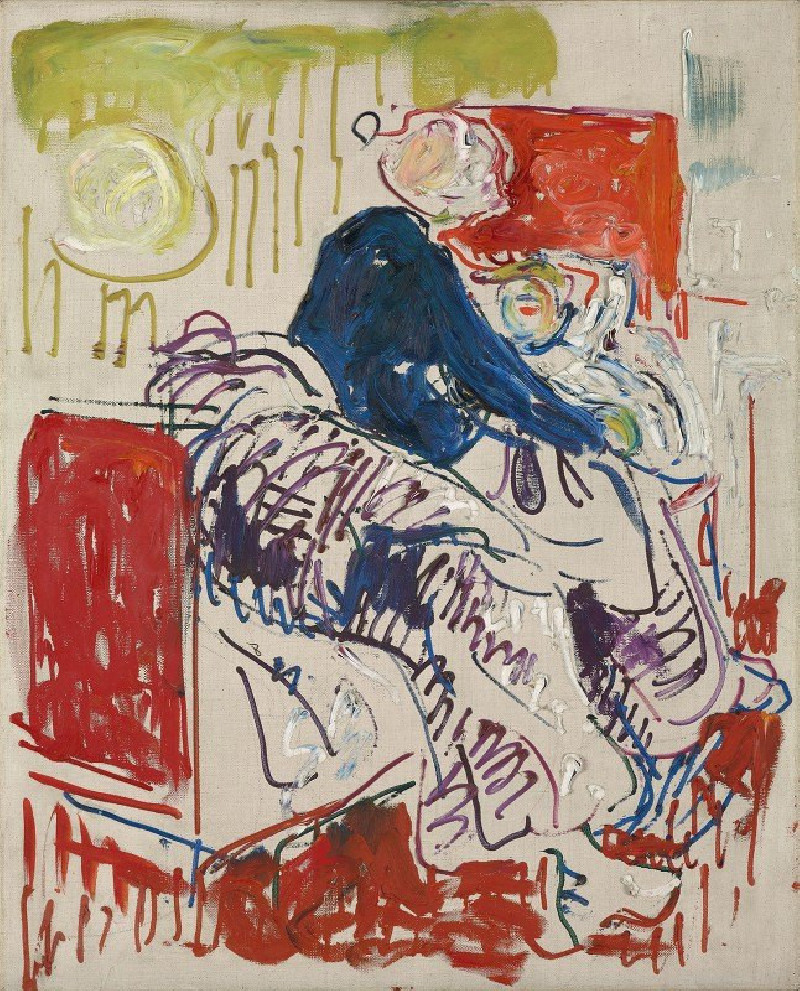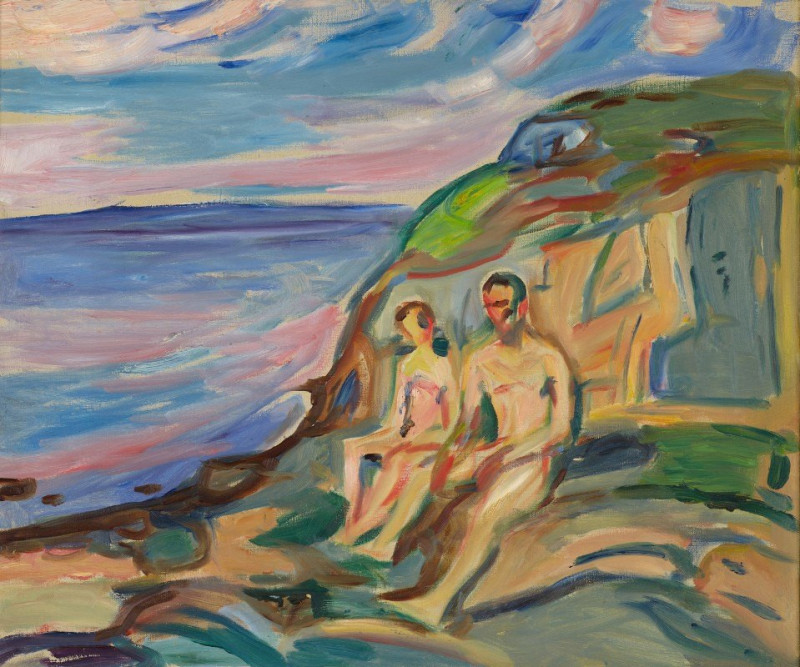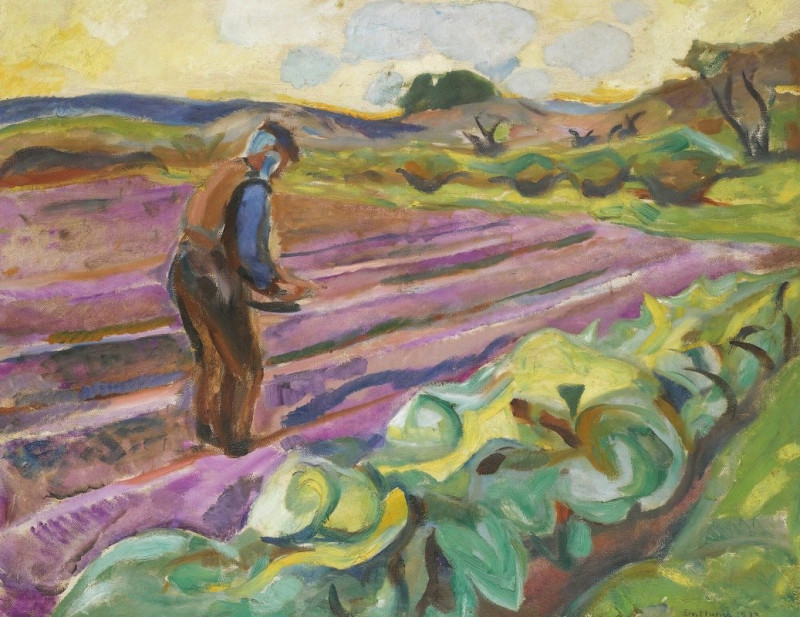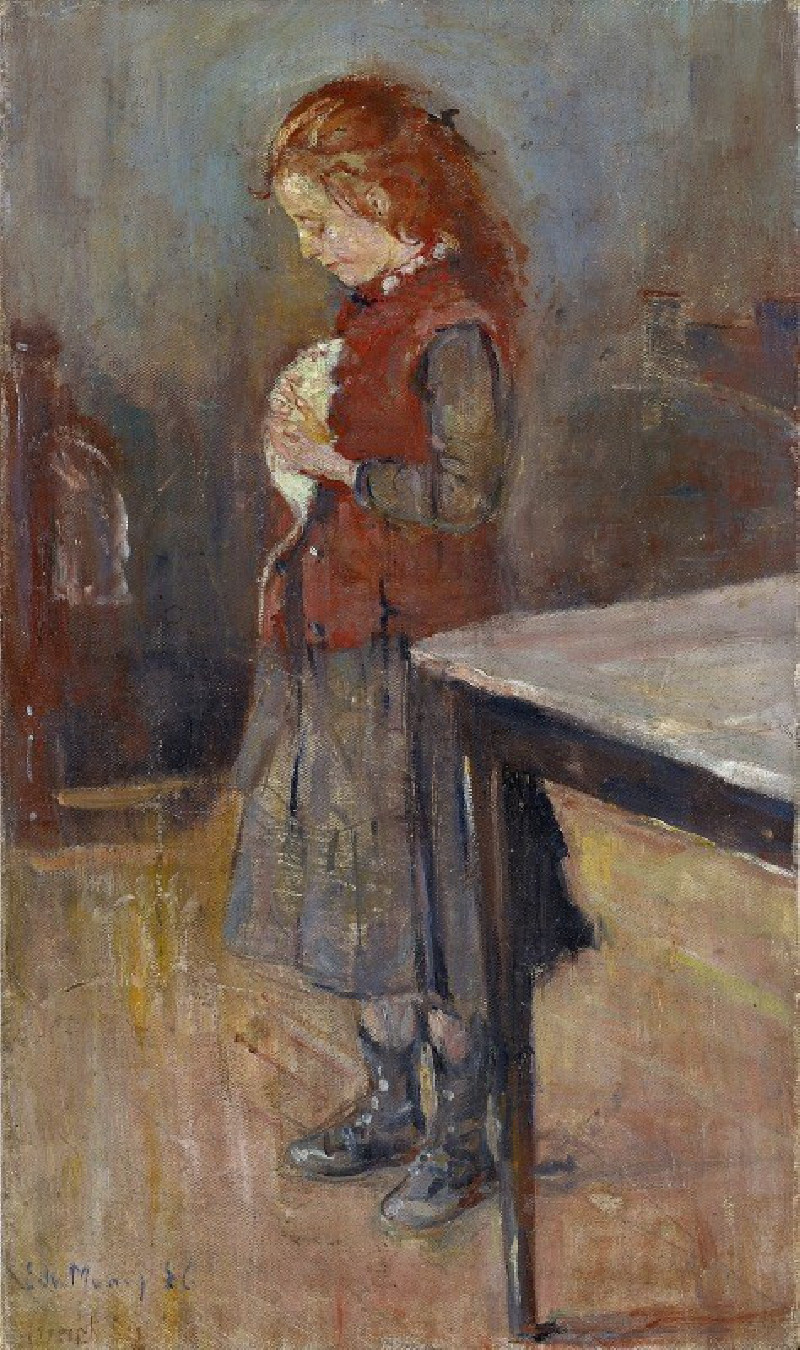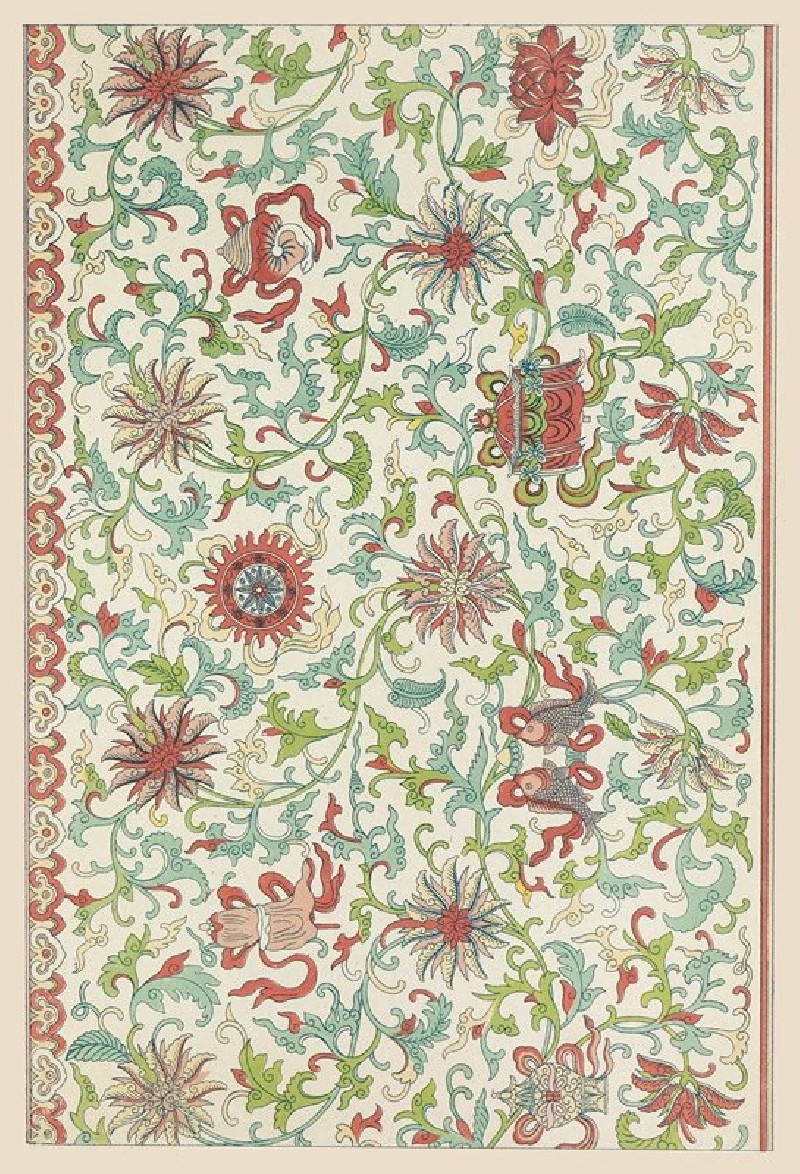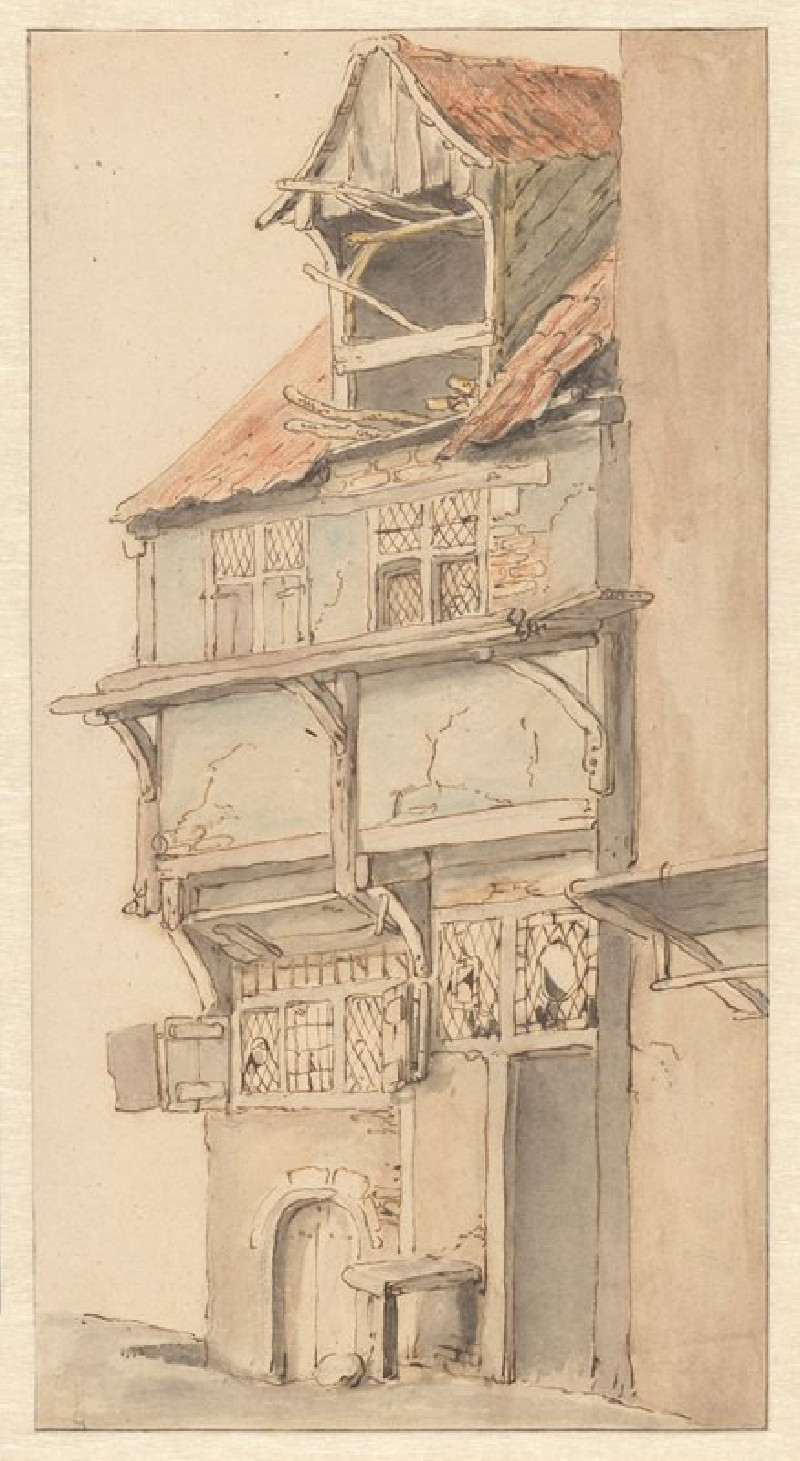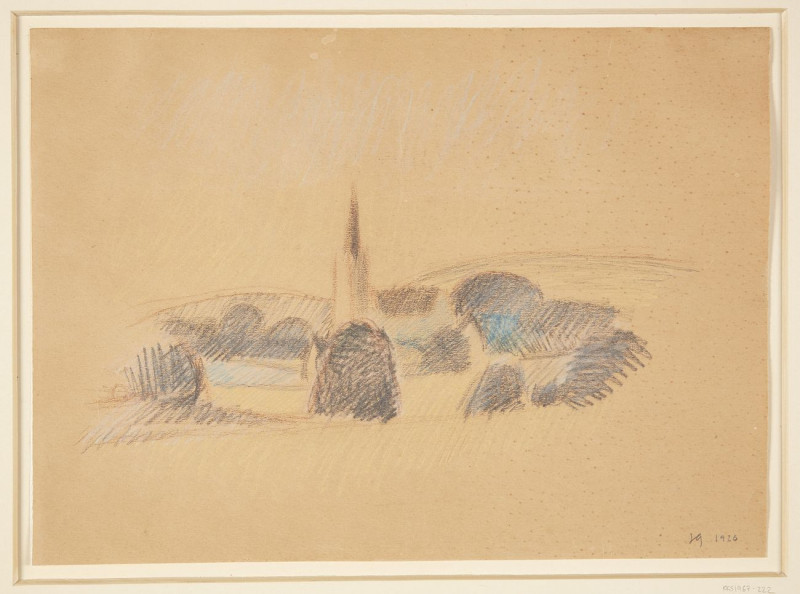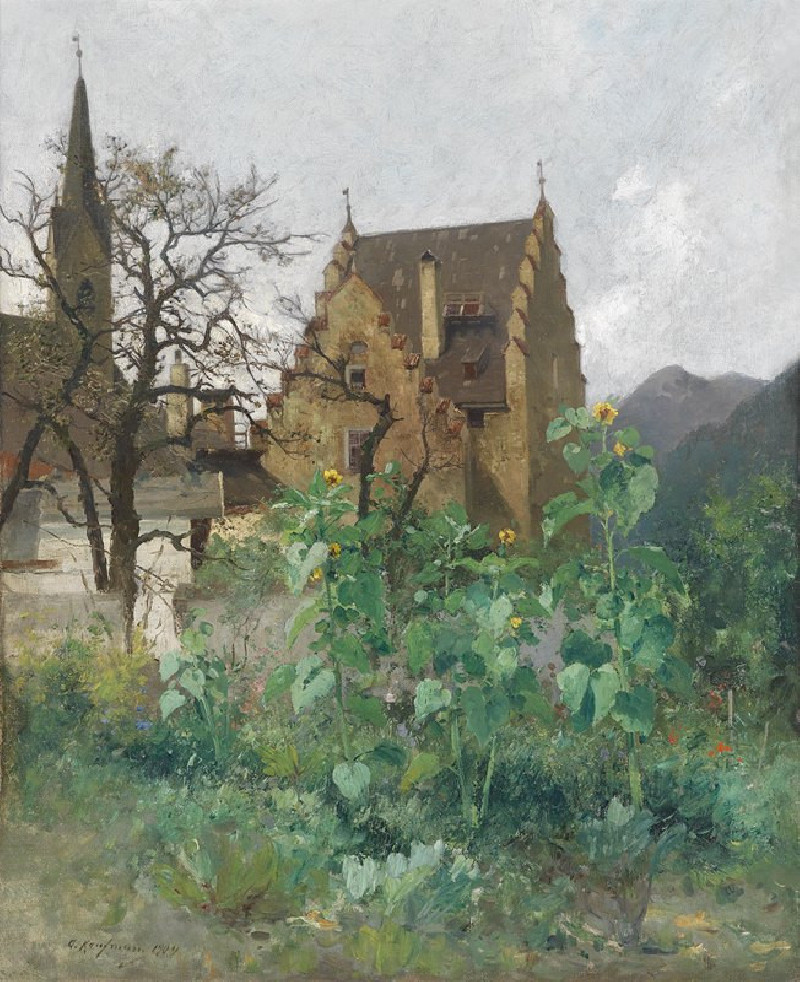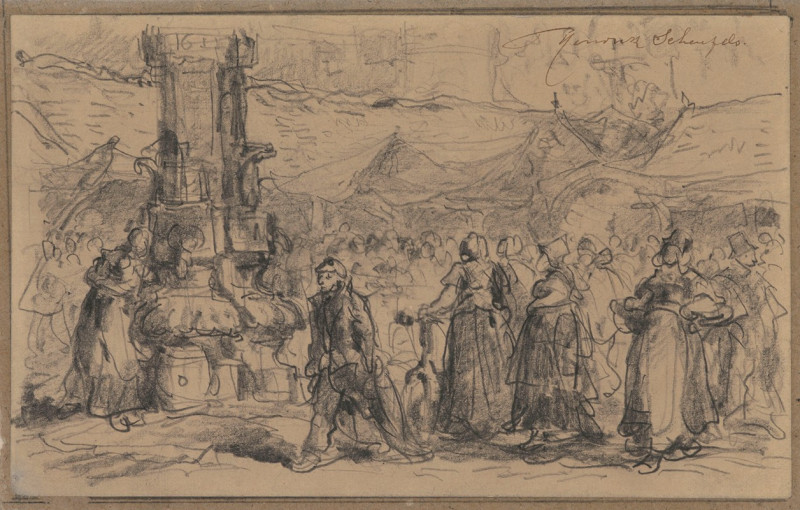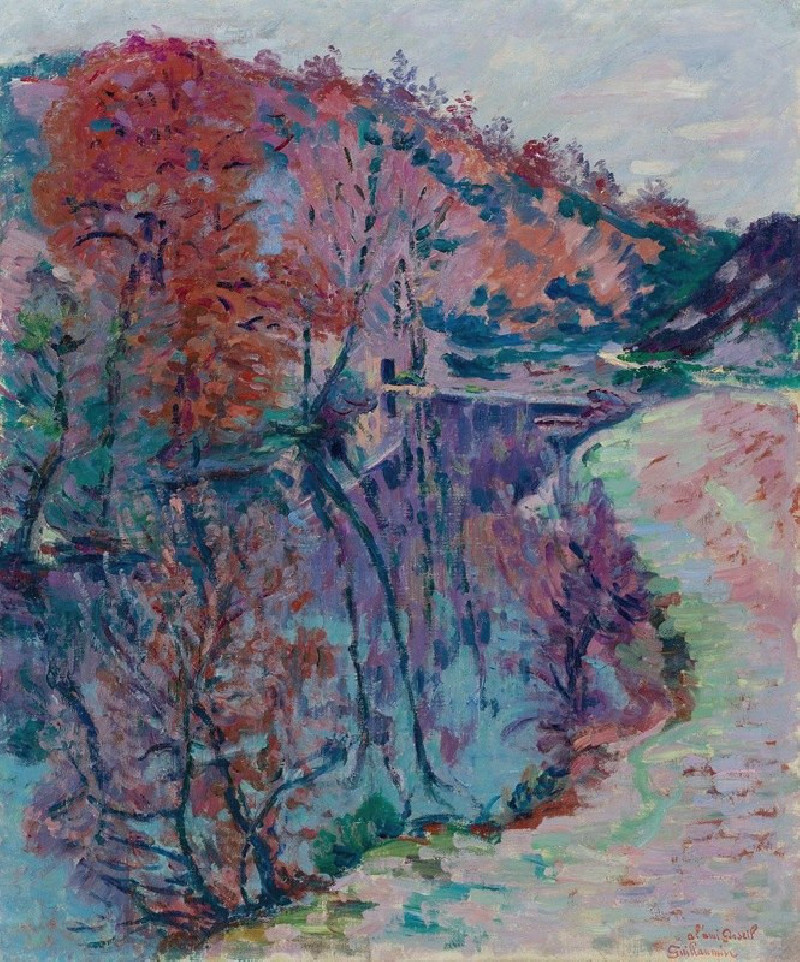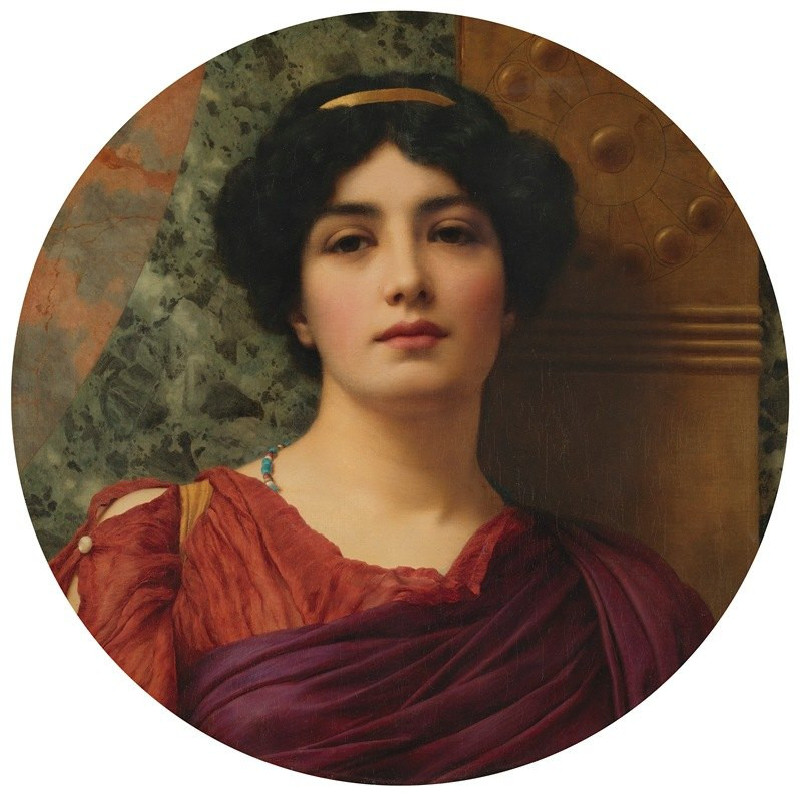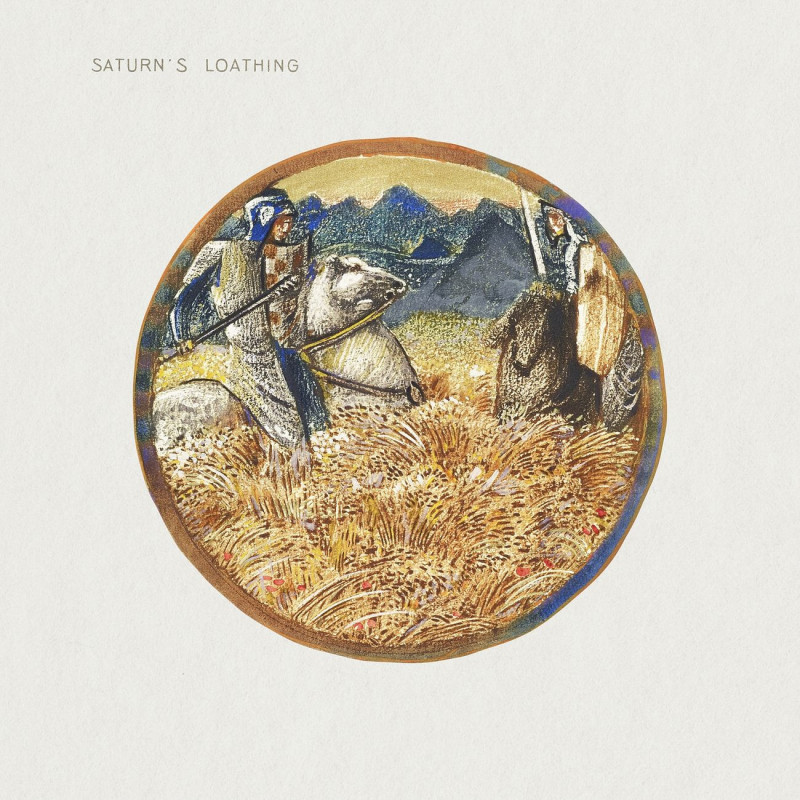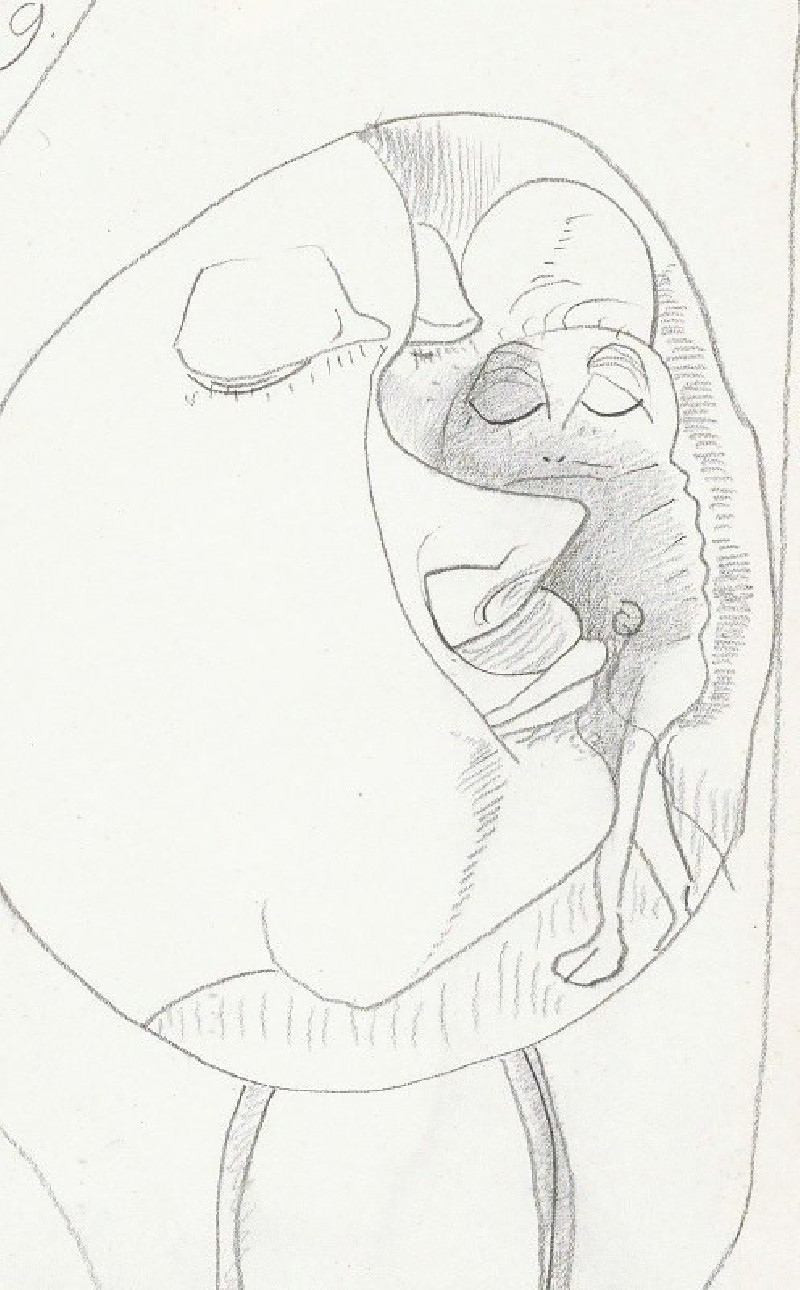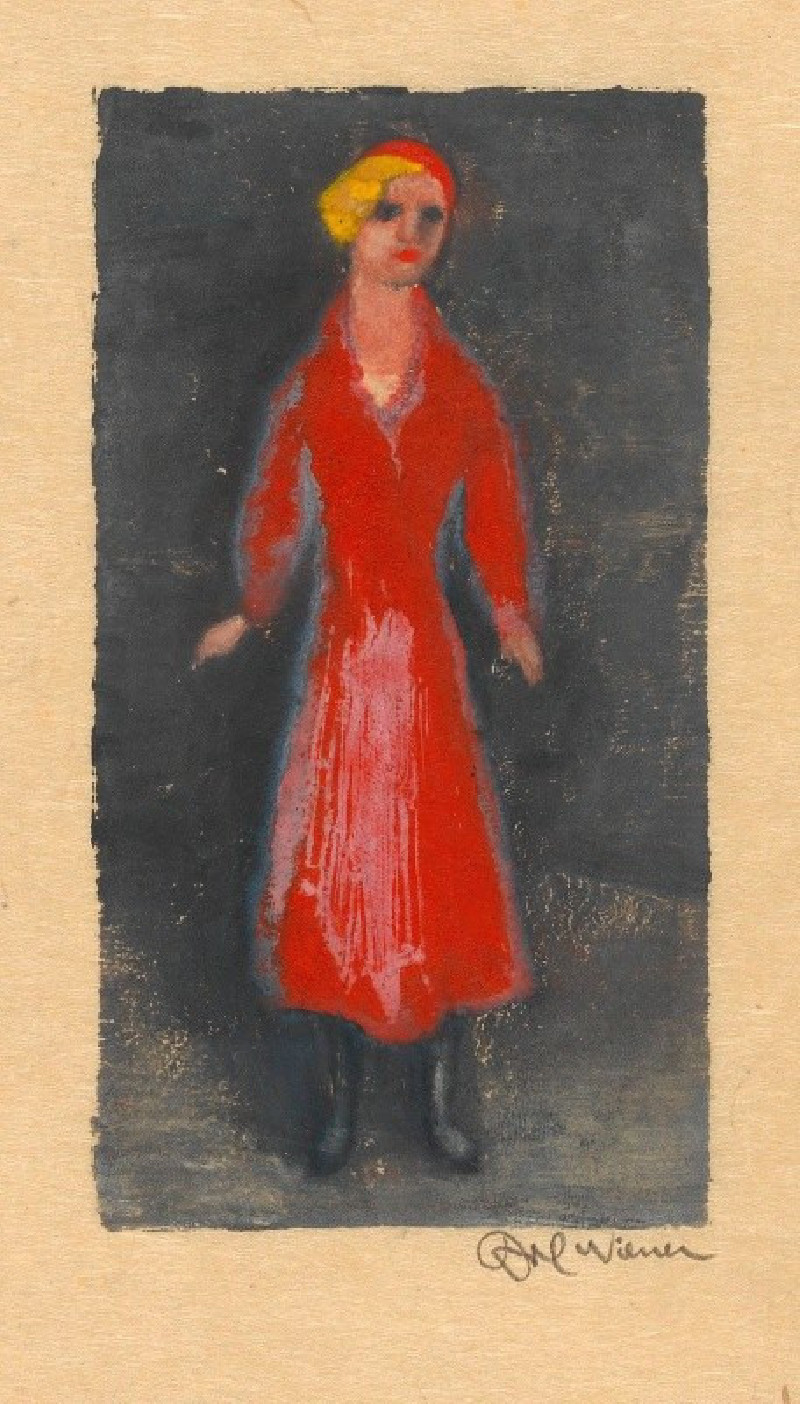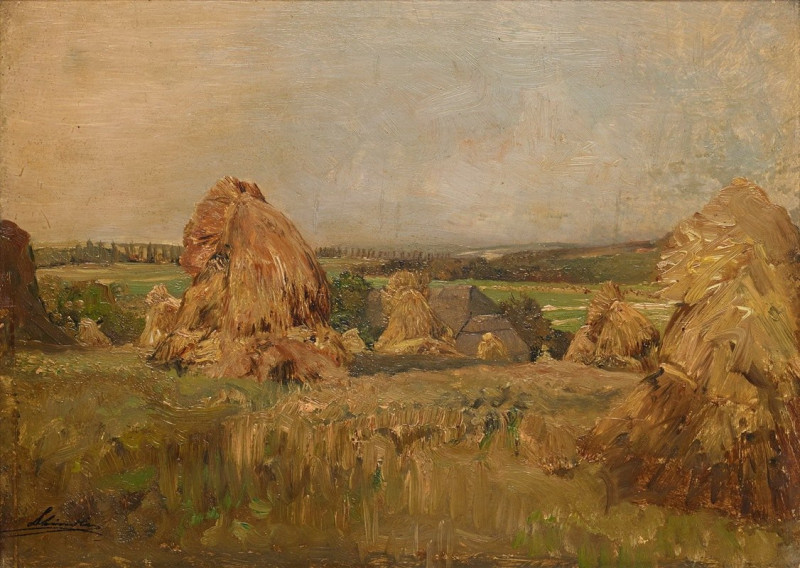Red Rocks (1915)
Technique: Giclée quality print
Recommended by our customers
More about this artwork
The painting "Red Rocks" by Edvard Munch, created in 1915, captures a vivid and somewhat abstract landscape scene. The focus of the painting is on striking, boldly colored rock formations, predominantly in shades of red and pink, which dominate the foreground. These rocks twist and fold in dynamic, almost organic shapes, suggesting both movement and the ruggedness of the natural world.In contrast to the warm hues of the rocks, Munch uses cooler tones of blue and green to depict shadows and crevices within the rocks, adding depth and complexity to the composition. The background features a softly painted horizon, where gentle gradients of blue, yellow, and white suggest a sky possibly at sunset or sunrise, providing a serene backdrop to the intense and textured foreground.This interplay of colors and forms in "Red Rocks" demonstrates Munch's skill in expressing emotional and dramatic landscapes, moving beyond direct representation to evoke a sense of the sublime and the profound connection between nature and human emotion. The painting's brushwork is loose, enhancing the expressive quality of the scene with a sense of immediacy and spontaneity.
Delivery
Returns
Edvard Munch (12 December 1863 – 23 January 1944) was a Norwegian painter. His best known work, The Scream (1893), has become one of Western art's most iconic images.
His childhood was overshadowed by illness, bereavement and the dread of inheriting a mental condition that ran in the family. Studying at the Royal School of Art and Design in Kristiania (today's Oslo), Munch began to live a bohemian life under the influence of the nihilist Hans Jæger, who urged him to paint his own emotional and psychological state ('soul painting'); from this emerged his distinctive style.

